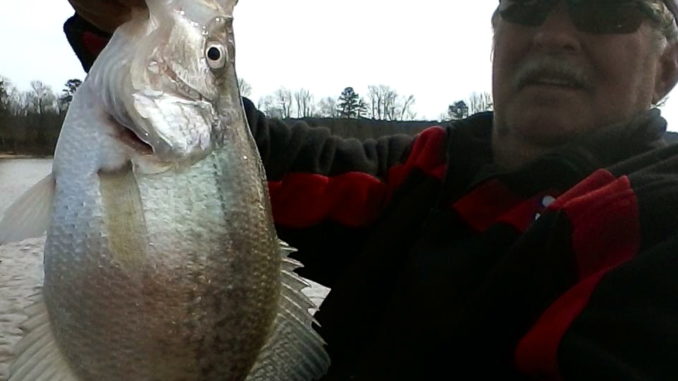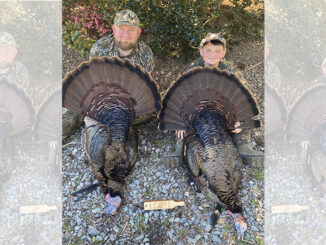
Prespawn feeding frenzy is only a few degrees away, guide says
The arctic blast that swallowed up much of North Carolina may have frozen crappie in their tracks, but rest assured the clock is ticking on a big move to shallower water before the spawn. Guide Chris Bullock of Fountain is already finding fish staging in the backs of major creeks on Kerr Lake, and he’s ready to start spider-rigging as soon as warmer weather returns.
“You wouldn’t think a couple of degrees would make a difference, but I’m here to tell you that it does,” said Bullock (252-902-4039), who runs Kerr Lake Crappie and Cats Guide Service. “The longer days will warm shallow water faster and trigger crappie to start thinking about spawning areas. I recently caught nice crappie in 16 to 18 feet of water. The water temperature was 42 degrees in the creek and 39 to 40 on the main lake. They may be deeper after all the cold weather, but when it warms up again, they’ll be back.”
According to Bullock, spider-rigging, aka tight-line trolling, is the most-efficient strategy for catching prespawn crappie; here are a few of his tips to make it more productive.
· Go slow and pay attention to turns. “When the water is still cold, 0.2 to 0.6 mph is as fast as you want to go,” saidBullock, who fishes 8 to 10 16-foot rods fanned out around the bow of his boat. “Whenever you turn around to make another pass, your inside rods will nearly stop, while your outside rods will double in speed. Getting bit at this time and on which rod will tell you whether you need to speed up or slow down.”
· Double your odds. “I use a Capps and Coleman rig to troll live minnows,” Bullock said, describing a set-up that starts with a three-way swivel attached to the mainline and a 12-inch leader tied to the second eyelet and a bare hook. The last eyelet receives a leader that is threaded through a ¾-ounce egg weight five times, 14 inches down, and tied to a bare hook or jig head 12 inches below the weight. The end result is a wall of up to 20 minnows directed at crappie spread out on feeding flats.
· Crappie will leave structure. “When crappie move to the backs of the creeks to feed up for the spawn, they don’t need a lot of cover,” Bullock said. “They won’t be around structure or drops, and they’ll leave the brush piles. I start looking for them on my graph in about 16 feet of water on the flats where they’ll be suspended from 2 feet off the bottom to 3 feet from the surface.”
· Pull corks way behind. Bullock trolls four rods behind the boat with large corks and trolling weights, two 16-foot rods set out like outriggers and two shorter rods behind them. “It takes crappie 30 seconds to a minute to eat again after the boat passes over in shallow water, so I’ll pull the lines 75 to 100 feet behind,” he said.
· Bring a big net. “Big catfish like to eat crappie as much as we do,” Bullock said “When the crappie move shallow, they’ll follow them in. I’ve caught several 40- to 50-pounders while spider-rigging. It takes a while to get them to the boat, but I wouldn’t have been able to land them without a big net.”




